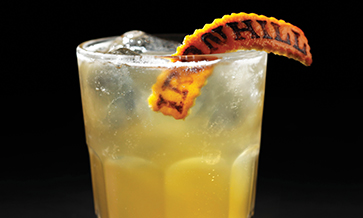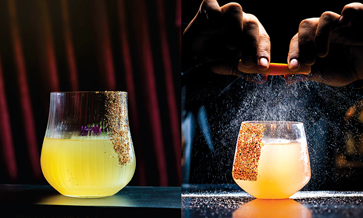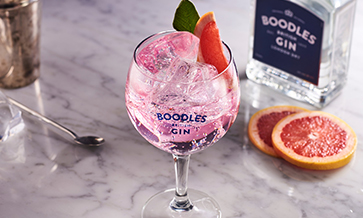It is supremely interesting how, after working in the industry for so many years, I first heard about clarified cocktails only late in 2017. Probably the first time I took interest in the concept of a having a drink which looked clear, packed with flavours and – when poured over a nice big clear block of ice – looked exquisite!
It had most definitely to do with my sudden change from looking at drinks with fancy garnishes, froth and foam to something clean and classy. I think Perch had introduced me to the idea of ‘less is more’, and minimalism is the way forward.
My first try, accidental and almost with zero understanding of the process or any prior knowledge about clarification, was achieved by a simple process – unknown patience (well almost). I had made pre-batched penicillin for my very first event of Monkey Shoulder, and there was a half-bottle left over shoved into my fridge for almost two weeks.
The solid particles had settled down, giving way to a clean, clear liquid, and I fell in love in that very instance. For me there was no looking back!
Deep dive
I had to understand the process of clarification better. What does it mean by clarifying a cocktail? The idea was fairly simple: remove any suspended solid particles.
These are usually contributed by the fresh citrus juices, modifiers such as vermouth or fortified wine, or the herbs or spices that you use to make any cocktail – even the sugars.
By trapping these particles using one technique or the other, you are necessarily helping to create a lovely clean, clear liquid which is still packed with flavours. It is what you intended it to be, but look unassuming and minimalistic.
The first time I heard about this was the first ever soup I got to make at the catering college – a consommé which was made using an egg raft – clarification using the technique of an egg was right there!
A deep dive into the topic gave away a lot many more answers. There are a variety of techniques that can be used to achieve this desired result, starting with the age-old technique of milk washing.
This technique dates back to early 1600s and was used in the infamous milk punches. The use of milk (which is yet another protein, like the egg) also helped in rounding off the harsh spirit and the astringency of the citrus, other than helping to clarify the liquid.
Conflicting claims
Like every other story in history, the history of clarification of cocktails and drinks also comes with a bit of conflicting claims. Most cocktail historians credit the creation of the clarified milk punch (clarified drink) to a lady named Aphra Ben.
She was a known British playwright and also reported to be a royal spy! She was probably the first woman to have made a living solely from writing. We are speaking about clarification as a technique which existed in mid-1600s.
There is another story which comes towards 1711, credited to a British housewife by the name of Mary Rockett, who recorded probably the earliest known recipes of a milk punch which included 2 gallons of hot milk, to which she add 1 gallon of brandy, a little over 1 gallon of water, eight lemons and two pounds of sugar.
It is said that she let the mixture sit for an hour, and then strained it into a flannel bag. This resulted in a very silky smooth, increased shelf-life tipple that could last for months, even years (when stored properly).
It is interesting to understand that in the early 1700s England was going through an era which was filled with an array of poorly made liquor – remember the gin lane? Since refrigeration was not yet a thing, clarification would have helped to round off the harsh flavours and also considerably improve the shelf life of the punch, the most popular drink during that time.
Another notable fan, who was known for his own recipe being penned was Benjamin Franklin, one of the founding fathers of the United States of America. He had apparently enclosed his own recipe in a letter to the governor of Massachusetts in 1763.
It is also to be noted that over a century later, bottles of the clarified milk punch were discovered in Charles Dickens’ wine cellar. It is said that when he died, the people going through his effects found about eight bottles of milk punch still in great condition.
Fast forward to the 21st century, and I must definitely credit the one person who made the rise in interest of clarified cocktails happen instantaneously – Dave Arnold, the creative genius behind the popular Booker and Dax. I started geeking about the process after reading his ever-popular book, Liquid Intelligence.
(To be continued)














